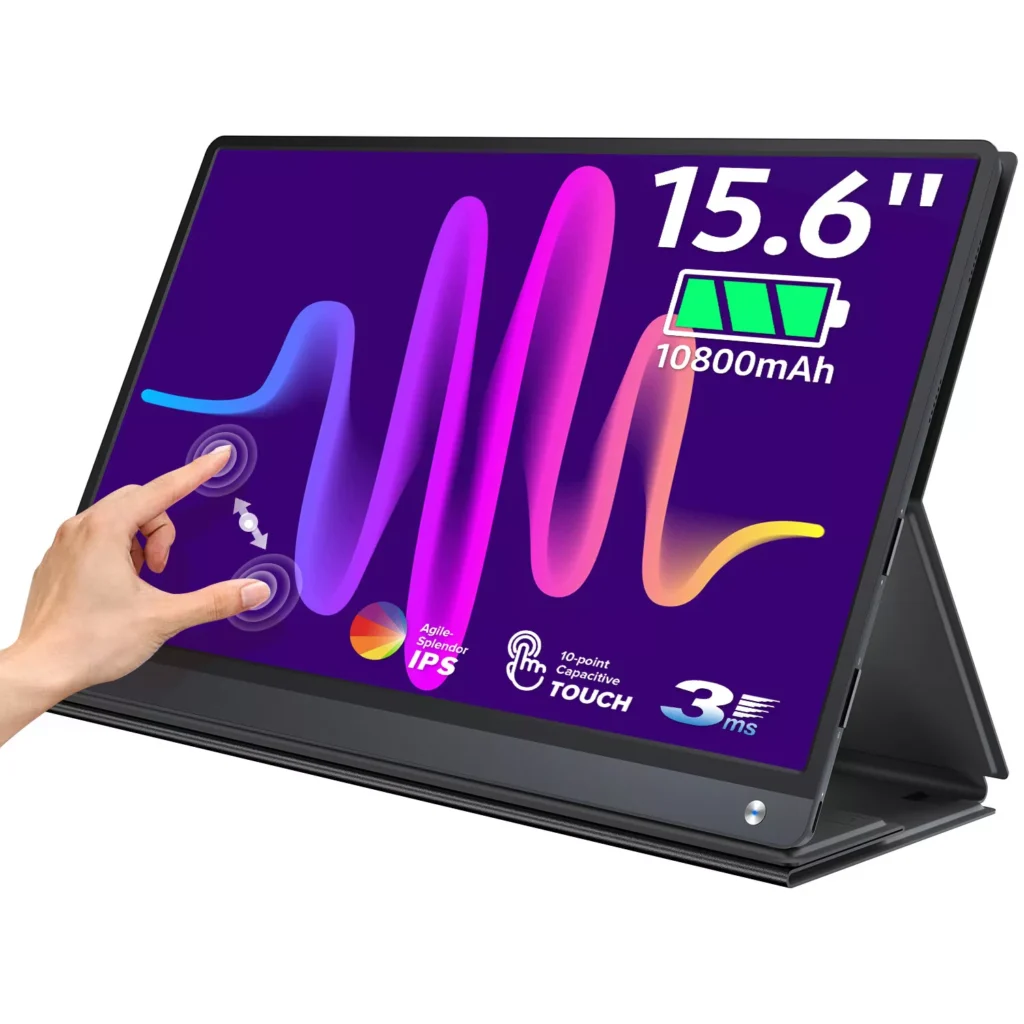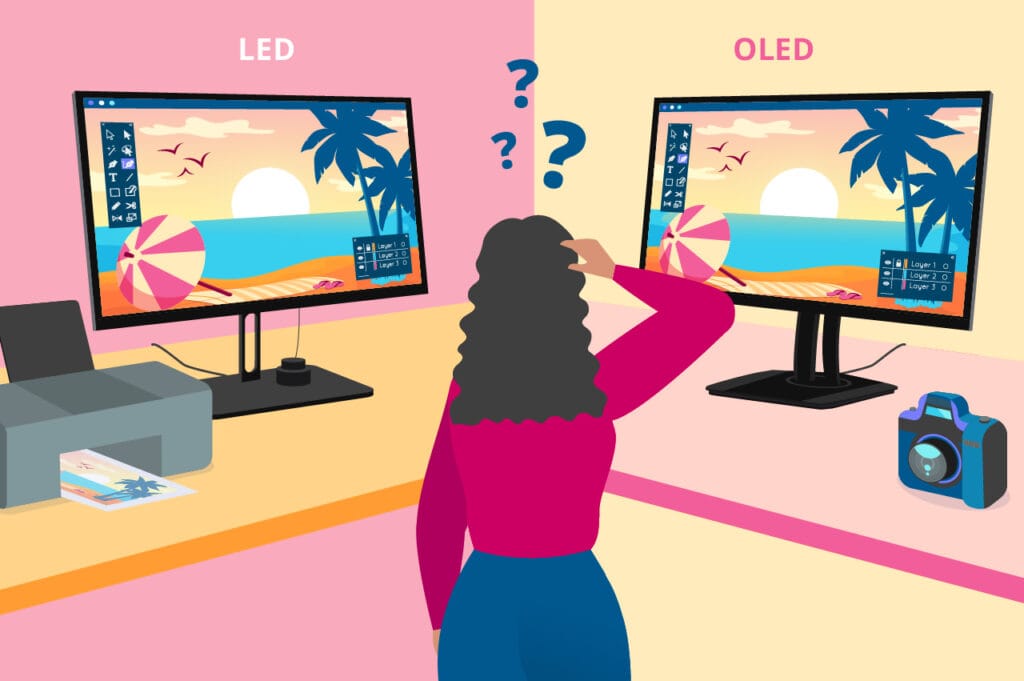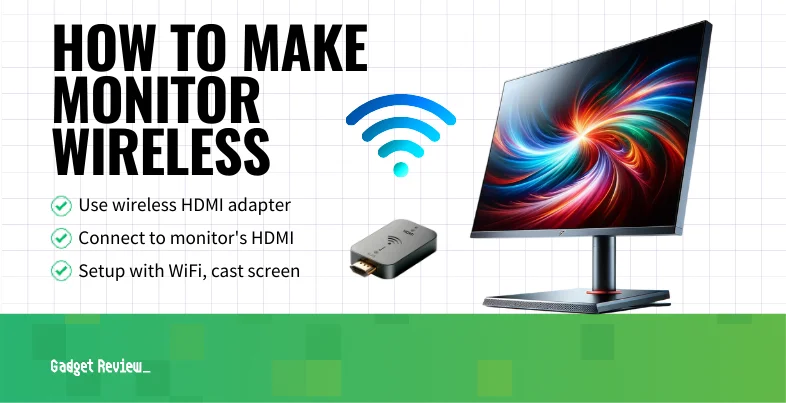The history of portable monitors begins in the late 2000s and early 2010s, as consumer demand for greater flexibility in workspaces and on-the-go productivity started to grow. Portable monitors, also known as secondary screens or travel monitors, initially served a niche market for business travelers and professionals who needed an extra screen for presentations and multitasking. These early models were fairly basic, with limited resolution and features.
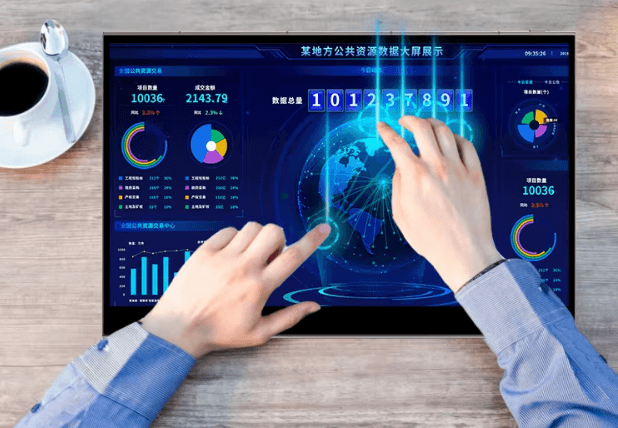
When Was the First Portable Monitors Launched?
The first notable portable monitors began to emerge around 2010-2012. These early models were simple, often featuring basic HD resolution (720p or 1080p) and limited connectivity options like USB 2.0. The technology gradually improved, and by 2015-2016, the market for portable monitors started to gain momentum, thanks to advancements in display technology and connectivity, such as the introduction of USB-C and Thunderbolt.
One of the earlier well-known portable monitors was from AOC, a brand that released a popular line of USB-powered portable monitors in the early 2010s. Their models targeted professionals needing lightweight, plug-and-play monitors for dual-screen setups on the go.
Growth and Popularity
Portable monitors became increasingly popular as remote work, freelance work, and digital nomad lifestyles grew. The rise of flexible work arrangements after 2015 created a demand for lightweight, portable solutions for professionals working outside of traditional office settings. Additionally, gamers and creative professionals also started to adopt portable monitors for enhanced productivity and entertainment.
Key developments that fueled their growth:
USB-C Connectivity: The adoption of USB-C made portable monitors much more accessible, as they could now be powered and connected through a single cable. This allowed for more seamless integration with laptops, tablets, and even smartphones.
Improved Display Technology: As resolution standards increased (up to 4K in some models), and features like IPS panels and HDR were introduced, portable monitors became more appealing to a broader audience, from office workers to creatives and gamers.
Gaming and Creative Work: Gaming, media editing, and design professionals increasingly adopted portable monitors for better performance, multitasking, and immersive experiences.
Rise During Remote Work Era
The global shift towards remote work during the COVID-19 pandemic in 2020 was a major turning point. Demand for work-from-home setups skyrocketed, and portable monitors became a must-have for professionals looking to increase their productivity by using dual or even triple-screen setups. They provided a solution for users seeking a lightweight, flexible alternative to traditional, bulkier external monitors.
Today, portable monitors are widely used across different sectors, from remote workers and gamers to students and creatives. Brands like ASUS, Lenovo, AOC have contributed to making portable monitors a mainstream accessory, offering a variety of models with features like touchscreens, high refresh rates, and multiple input options.
Use Cases of Portable Monitors in Real Life
Portable monitors have significantly impacted various aspects of life, providing enhanced flexibility and convenience in both personal and professional environments.
1. Remote Work & Productivity
One of the most transformative impacts of portable monitors has been in the world of remote work. As more people shifted to working from home, the demand for dual-screen setups grew. Portable monitors offer a lightweight, space-saving alternative to traditional external displays.
For freelancers and remote workers, having a portable monitor enhances multitasking capabilities, such as using one screen for a video conference and the other for taking notes or managing tasks. This added efficiency allows for a smoother workflow and increased productivity.

2. Education and Online Learning
With the rise of online education, students and teachers benefit from the added screen space provided by portable monitors. The ability to work with multiple documents, reference materials, or online tools simultaneously without constantly switching between tabs makes studying more efficient.
For students, a portable monitor can serve as an extension for reading, watching lectures, or collaborating with peers in online projects. Teachers can use portable monitors for teaching and tracking classroom participation simultaneously.
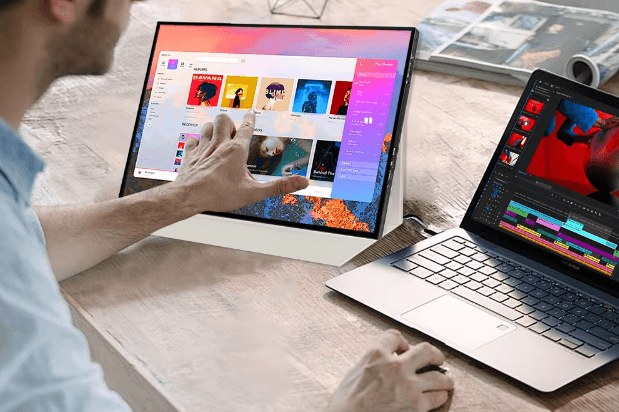
3. Creative Professionals (Designers, Photographers, and Video Editors)
In creative industries, professionals need multiple screens for complex tasks such as editing, designing, and rendering. Portable monitors have made it easier for designers and content creators to work from different locations without losing access to a multi-screen setup.
Photographers and video editors can use a portable monitor as a preview screen when working on location, enhancing their ability to check shots or edit visuals immediately.
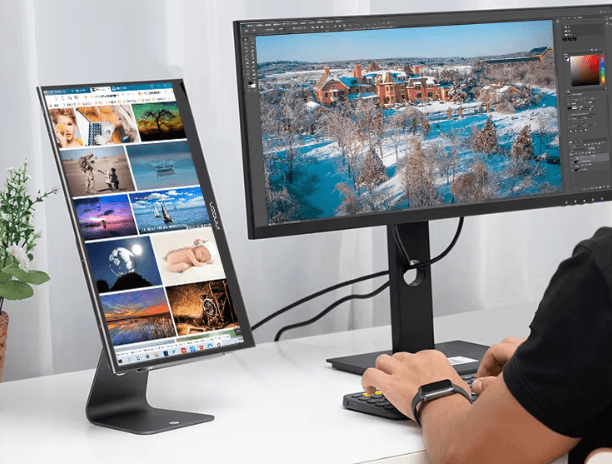
4. Gaming and Entertainment
Portable monitors have made gaming more versatile, allowing players to enjoy multi-monitor setups or larger displays while on the go. Gaming enthusiasts can take their setups to friends’ houses, LAN parties, or even when traveling, without sacrificing screen quality.
For gamers, portable monitors with high refresh rates and low response times have become essential tools for creating immersive gaming experiences. A gamer might set up their portable monitor alongside their main device to extend their gaming screen, monitor streams, or communicate with friends via Discord.
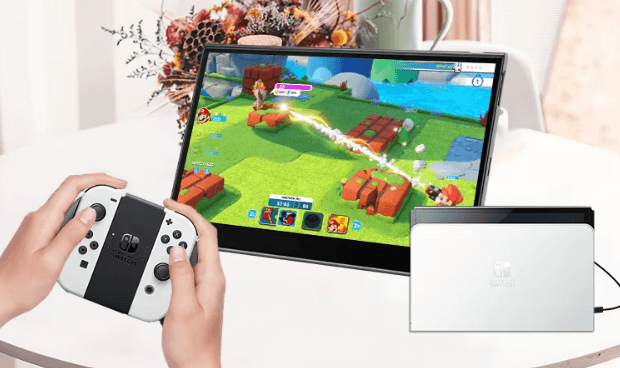
5. Healthcare
In healthcare, portable monitors have become useful tools for physicians and professionals who need to review patient data, medical records, or imaging while on the go. They allow healthcare workers to consult multiple pieces of information simultaneously, improving diagnosis and treatment plans.
6. Business Presentations & Collaboration
Portable monitors are extremely useful for professionals attending meetings or conferences where they need additional screen space for presentations or collaborative work. The mobility and ease of setup make portable monitors ideal for people constantly on the move.
For business professionals, having a portable monitor can significantly enhance presentations. A salesperson could set up a portable monitor to show clients data or visuals on one screen while keeping notes or a slide presentation on the other.

7. Retail & Customer Service
In industries such as retail or customer service, portable monitors are becoming valuable tools for helping staff access information quickly and efficiently. Whether checking stock, showing customers additional product options, or processing orders, portable monitors help streamline operations.
In a retail environment, sales associates might use a portable monitor to display additional product details or comparisons for customers, helping to make more informed purchasing decisions.
8. Finance and Trading
Financial professionals, especially stock traders, benefit from having multiple screens to monitor markets, analyze data, and manage multiple trades. Portable monitors have enabled them to extend their workstations on the go.Stock traders who rely on fast data processing and constant market monitoring can use portable monitors to extend their trading platforms while traveling.
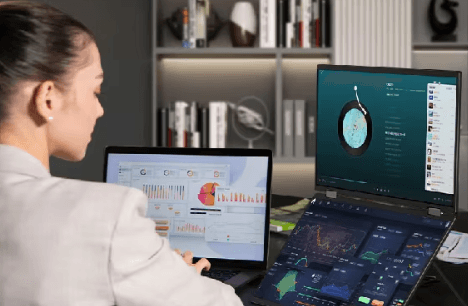
9. Government and Military Use
In government, defense, and military operations, portable monitors have been employed to create mobile command centers. Field agents, military officers, or personnel involved in logistics can use these monitors to display maps, mission details, or communication channels.
During military operations or disaster response efforts, portable monitors can assist in showing live satellite feeds, tracking data, and coordinating actions across different departments.
Conclusion
Portable monitors have fundamentally changed how we work, learn, create, and play. Their versatility and convenience have impacted a wide range of industries, providing professionals with the flexibility to perform at their best no matter where they are.
ONEXT Featured Product
-
 16 Inch Portable Monitor 2560*1600 FullHD 120Hz Gaming Computer Monitor Wide 16:9 Travel Monitors for Laptop Mac Phone Tablet PS4 Switch Xbox Built In Speakers,HDMI/Type-C Monitor
16 Inch Portable Monitor 2560*1600 FullHD 120Hz Gaming Computer Monitor Wide 16:9 Travel Monitors for Laptop Mac Phone Tablet PS4 Switch Xbox Built In Speakers,HDMI/Type-C Monitor -
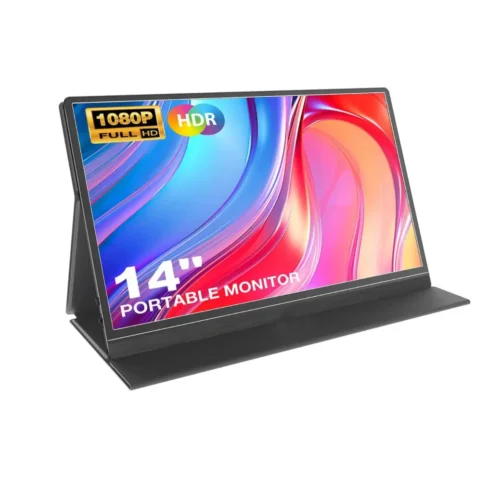 14.0″ Ultra Slim Monitor FHD 1080P External Display with Dual Speakers Second Screen for Laptop PC Phone Xbox PS4/5 Switch – A1 GAMUT Slim
14.0″ Ultra Slim Monitor FHD 1080P External Display with Dual Speakers Second Screen for Laptop PC Phone Xbox PS4/5 Switch – A1 GAMUT Slim -
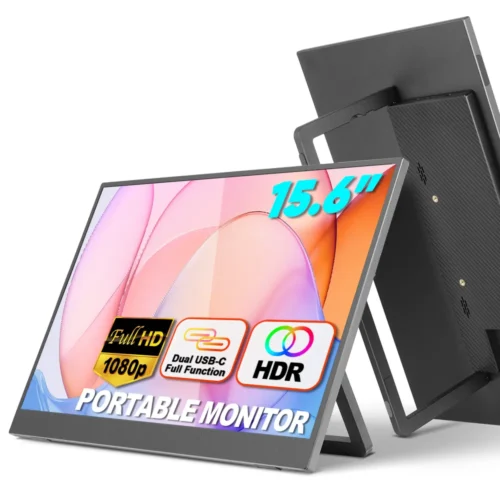 15.6 Inch FHD 1080P Portable Displays USB C HDMI External Display for Laptop Second Monitor
15.6 Inch FHD 1080P Portable Displays USB C HDMI External Display for Laptop Second Monitor


